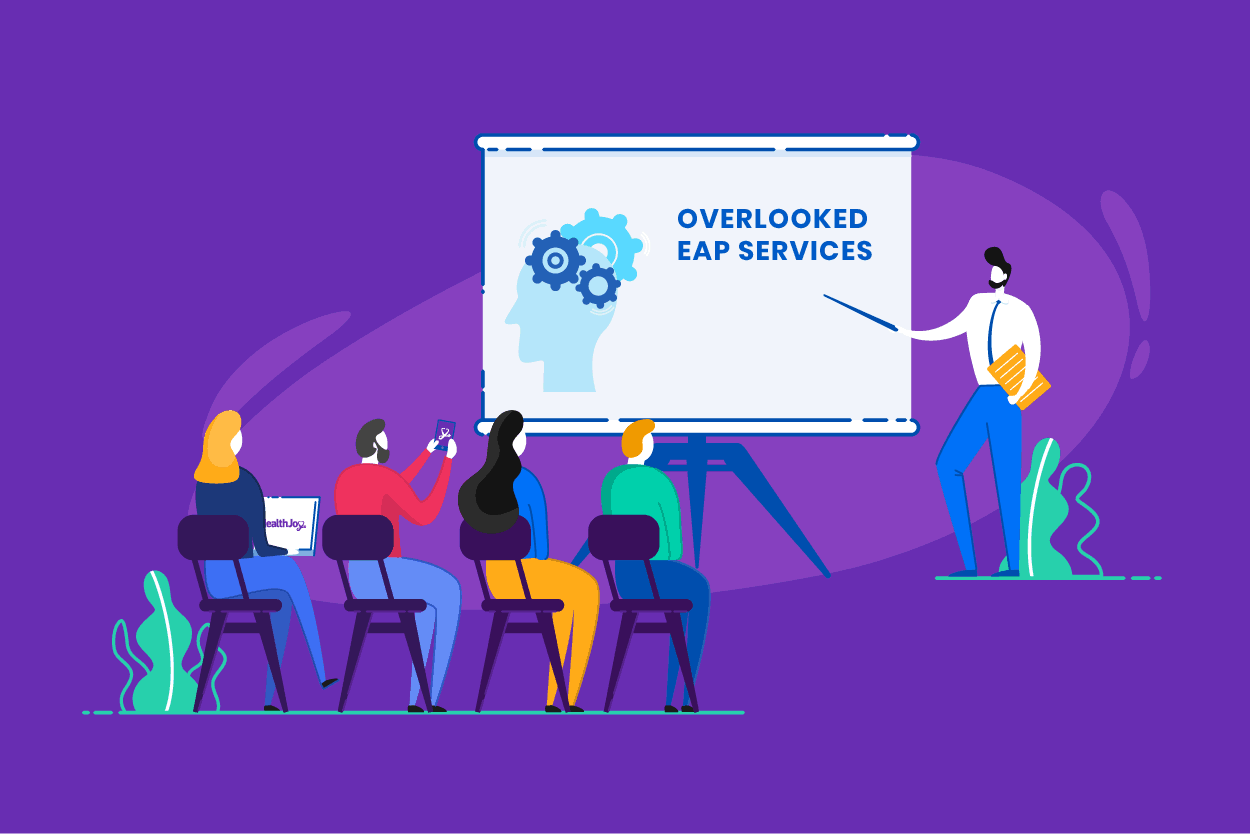Four Reasons Your Employees Don’t Use EAP Benefits
On average, organizations spend over $15,000 per year on each employee experiencing mental health issues. Employers are constantly searching for...
Connected Navigation Platform
Guiding to high-value care
Behavioral Health
Foster a mentally healthy workplace
EAP
Supporting holistic wellbeing
Virtual MSK Care
Reimagining musculoskeletal care
Virtual Primary Care
Powered by smart navigation
Surgery Centers of Excellence
Best-in-class surgical outcomes
Virtual Urgent Care
Immediate care, any hour of the day
Chronic Care
A new approach to chronic care
Integrations
Flexible to any strategy

A “household pulse” survey administered by the Census Bureau in the first year of the pandemic showed one-third of Americans had symptoms of clinical anxiety, depression, or both. In response, The National Safety Council emphasized employers’ role in combatting this crisis, saying they must brace for an increase in substance use disorders, absenteeism, presenteeism, and more.
As the NSC points out, it’s more important than ever to support employee mental health. In the two years since that declaration, we've seen a renewed focus on employee mental health and support, even as mental health crises abound.
Employers have innovated and invested in new methods of support. But we shouldn’t overlook a critical front door to mental health care: the Employee Assistance Program (EAP). An EAP program offers third-party counseling services to help employees navigate challenging life situations that affect their personal and professional lives.
While more than three-quarters of US employers offer EAP’s, most of their employees don’t know about the service. Let's talk about three major barriers to engaging employees with their EAP.
An EAP program helps employees with stress management for a variety of situations. Services can address relationships, legal challenges, substance use disorders, financial concerns, elder care support, employee mental health, and more. EAPs are strictly confidential and intended to help employees effectively deal with their problems.
We know that EAP services are a great way to increase employee productivity, happiness, and wellness. Estimates place the ROI on EAP at anywhere from $1.49 to $13 for every $1 spent.
We see three main reasons why your employees don’t use EAP’s:
On a basic level, the nuts and bolts of an EAP program may be unclear to your employees. Awareness is the first step, as many employees might not know it exists. They may also be afraid to access the offering because of a misunderstanding of cost.
Is it truly free?
How many sessions are covered by their employer?
You can imagine that taken together, this stack of questions could keep already discouraged employees from ever reaching out.
Solution:
Create a year-round communication plan that highlights your EAP offering services, costs, contact numbers, and any other simplified details. Distribute information in bite-sized pieces throughout the year, and don’t rely on email alone. Instead, alternate where and how you educate employees with SMS messages, emails, posters, and even Slack or Microsoft Teams messages.
Mental illness, financial struggles, and marital problems remain heavily stigmatized, even in modern life. EAP’s address these issues, but employees may be hesitant to engage out of fear of stigmatization. That fear may even be unconscious; employees could be unwilling to seek help not only because they fear someone will see them struggle, but also because they don’t want to admit to themselves that they are struggling.
A misunderstanding of the EAP program can compound that fear, especially if employees think they need permission. Those who believe EAP use requires HR approval are unlikely to seek it for fear of being stigmatized.
Solution: Invite senior leadership to share stories about their positive EAP experience. If that isn’t possible, work to collect anonymous stories from your EAP provider. Social proof helps employees understand that everyone needs help from time to time, and helps break down the stigma.
Emphasize the confidential nature of EAP services in every communication about this benefit. Employees need to understand that management will not know who's accessed the third-party service, and anything they say will not make it back to any internal employees. Also, make it clear that employees don’t need prior authorization of any kind to seek help. You really can’t say it often enough.
Lastly, your EAP may be too difficult to use. This barrier could be due to clunky software, a confusing benefits booklet, or adding too many similar services to your benefits offering. To access their EAP, do they call a number? Visit a website? Getting to the EAP can become an insurmountable obstacle.
An EAP is most effective when it’s clearly explained and offered alongside other benefits.
Solution: Make it simple to use your EAP by clearly displaying contact numbers throughout your office or company intranet. If you use Slack, pin contact information in a popular channel. If you use a healthcare navigation platform, point employees to this point of contact often so they can familiarize themselves with the process of using EAP.
Employees need mental health support more than ever before. Your EAP is poised to help—but only if you make it easy for them to vault these barriers. Make your EAP process easy to understand, work to break down stigma, and simplify EAP access. Sure, utilization will go up, but another outcome is more important: more employees will get the help they need.
That’s well worth your efforts.

On average, organizations spend over $15,000 per year on each employee experiencing mental health issues. Employers are constantly searching for...

When you think of supporting employee mental health through a pandemic, a counseling benefit might be the first thing that comes to mind. But what...